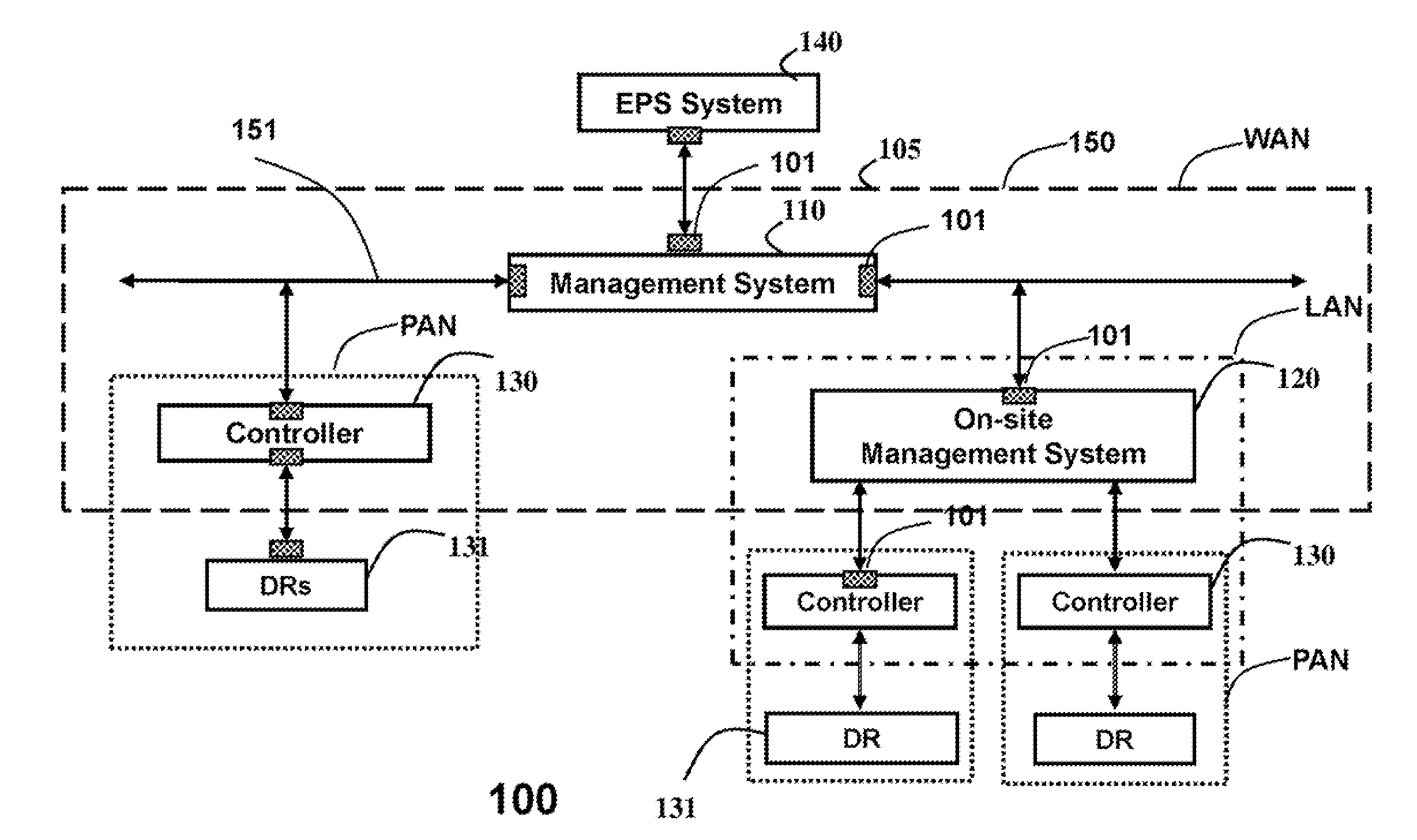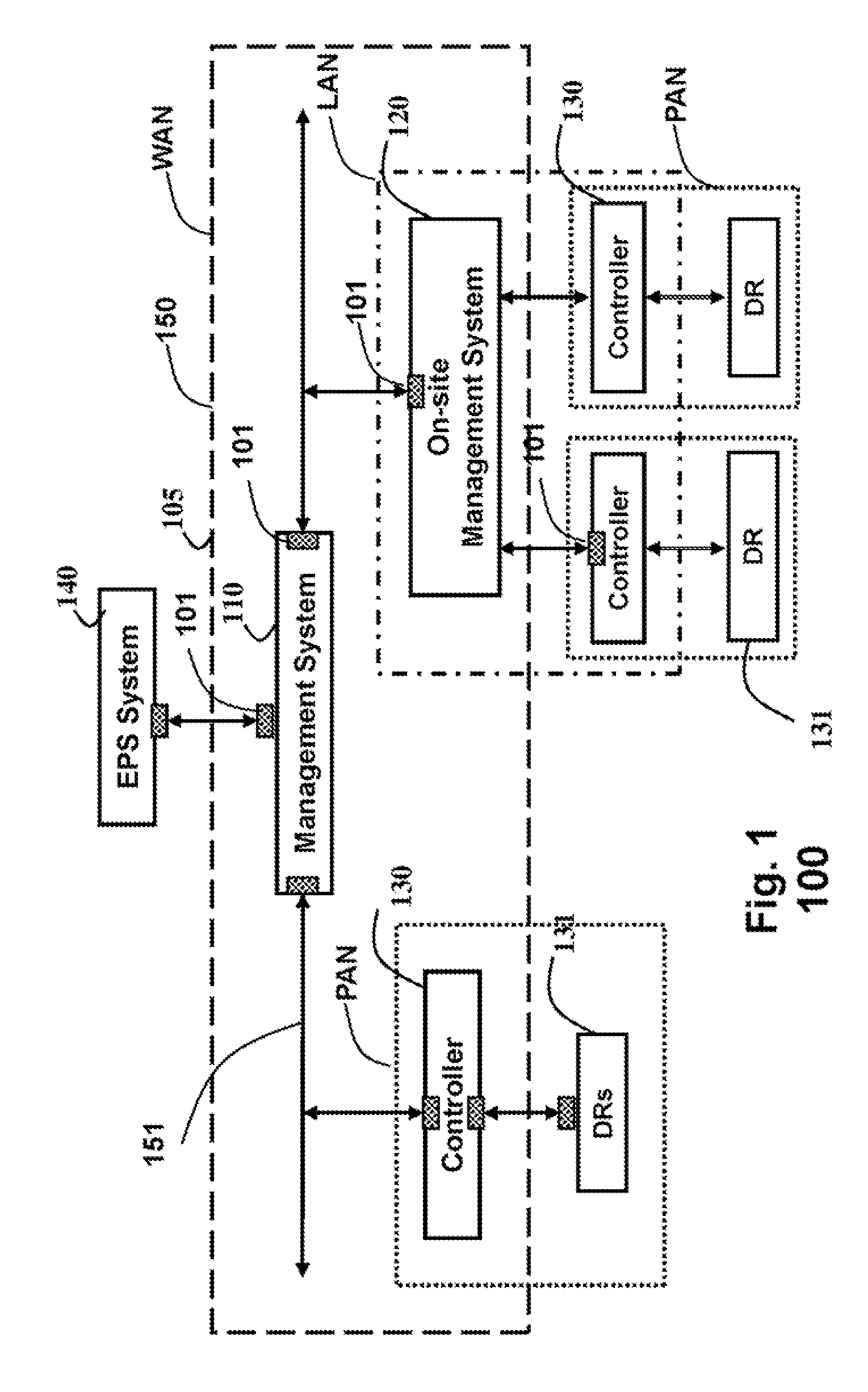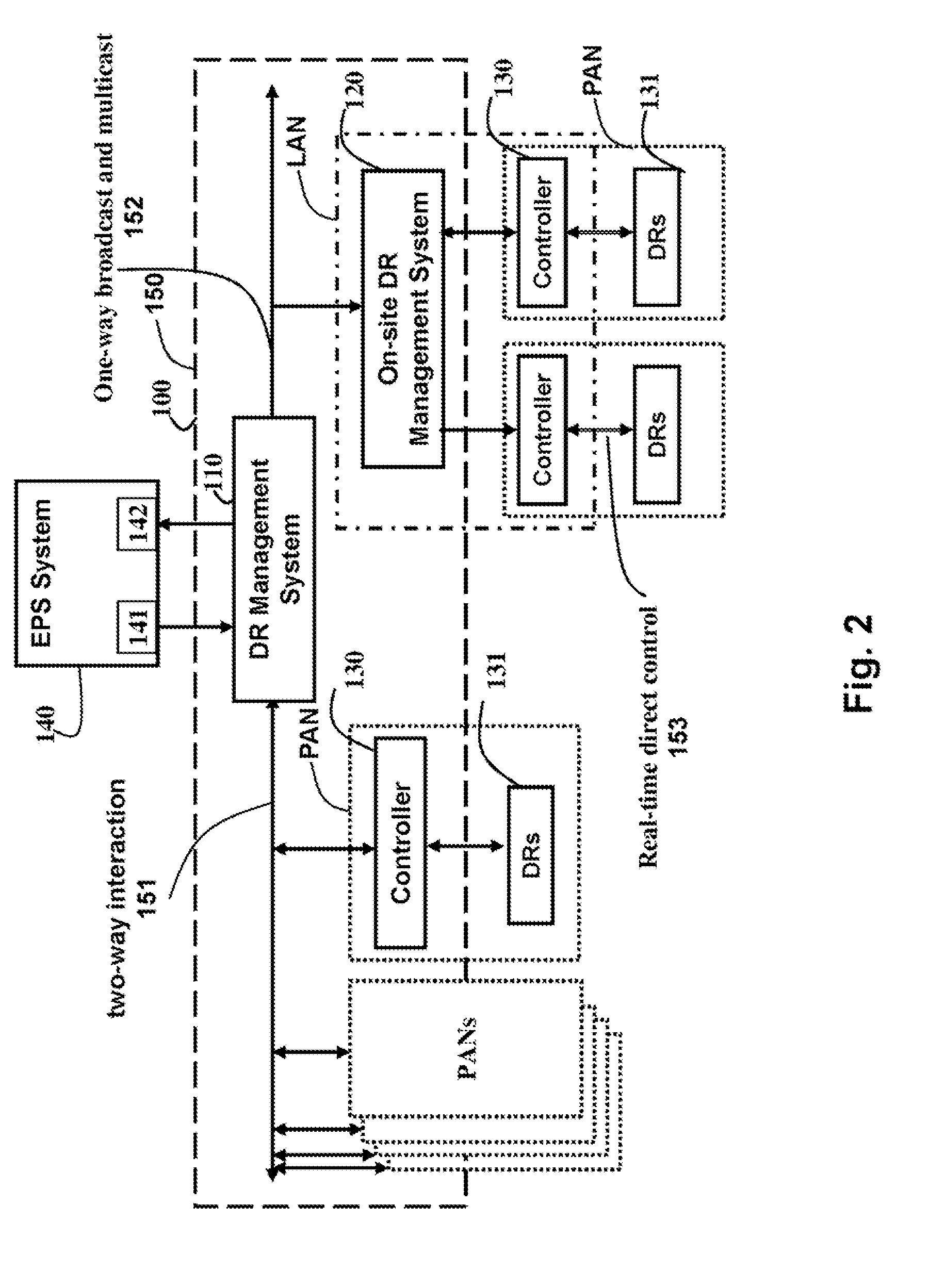Network Architectures for Distributed Resource Management in Electric Power Systems
a network architecture and distributed resource technology, applied in the integration of power network operation systems, dc network circuit arrangements, climate sustainability, etc., can solve the problems of high penetration of variable and unmanaged power sources, damage to power devices, and even human injury, and achieve the effect of reducing the risk of power loss and loss
- Summary
- Abstract
- Description
- Claims
- Application Information
AI Technical Summary
Benefits of technology
Problems solved by technology
Method used
Image
Examples
Embodiment Construction
[0017]Network Architecture for Managing Distributed Resources in Electric Power Systems
[0018]As shown in FIG. 1, the embodiments of the invention provide a network 100 and a control interaction architecture for managing distributed resources (DRs) 131 connected to an electric power systems (EPS) 140 to realize reliable and efficient operation of the DRs and the EPS.
[0019]The network 100 includes: a management system 110, an on-site management system 120, a set of controllers 130, and a set of DRs 131, wherein each set of DRs is connected to one controller. The DRs can be distributed generators and distributed storages. Of particular interest are renewable energy resources such as produced by sunlight, wind, rain, tides, geothermal heat, etc. As used herein a set includes one or more members.
[0020]The network also includes communication interfaces 101, some of which are shown.
[0021]The network can be a wide area network (WAN) 150 that uses two-way communications 151, which can be wir...
PUM
 Login to View More
Login to View More Abstract
Description
Claims
Application Information
 Login to View More
Login to View More - R&D
- Intellectual Property
- Life Sciences
- Materials
- Tech Scout
- Unparalleled Data Quality
- Higher Quality Content
- 60% Fewer Hallucinations
Browse by: Latest US Patents, China's latest patents, Technical Efficacy Thesaurus, Application Domain, Technology Topic, Popular Technical Reports.
© 2025 PatSnap. All rights reserved.Legal|Privacy policy|Modern Slavery Act Transparency Statement|Sitemap|About US| Contact US: help@patsnap.com



